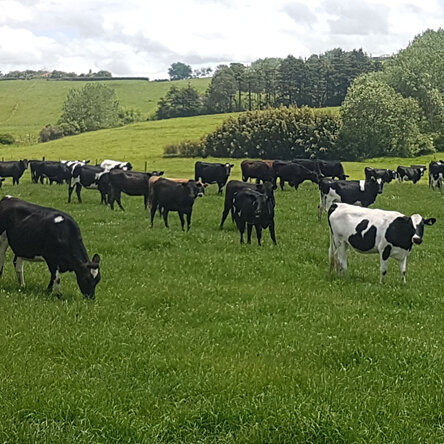Franklin Vets
Franklin Vets - excellence in veterinary care for dairy, farming, lifestyle, equine and household pets. BESTPRACTICE ACCREDITED NZ.
Your account is powered by Storbie. To edit your profile visit my.storbie.com
Your account is powered by Storbie. To edit your profile visit my.storbie.com

Providing a well-balanced and nutritionally adequate diet is essential for optimal growth and development. This applies from calves right through to entering the herd and is an area where New Zealand's youngstock are often left behind. Ensuring adequate supplementation of trace elements trace elements like copper and selenium is crucial for skeletal development, immune function, and overall health. New evidence regarding heifer shoulder fractures suggests a significant component from under-nutrition, adding to the benefits of getting this area right.
Regular monitoring of body condition score (BCS) and growth rates allows adjustments to feeding regimes as required to prevent underfeeding, promoting steady growth, and allowing preferential treatment of heifers that are falling behind.
Ensure vaccinations don't lapse while youngstock are away at grazing, particularly for leptospirosis and bovine viral diarrhoea (BVD). Both of these are essential to protect heifers from infectious diseases that can impede growth and reproductive performance. BVD vaccinations should ideally be administered before youngstock leave for grazing and boosted at least 4 weeks before mating.
Proper internal parasite control strategies prevent compromise to growth and selection for drench resistance which is high risk on youngstock grazing blocks. Drenching should be performed based on faecal egg counts and with a product recommended by your veterinarian.
Regular monitoring of growth rates, reproductive development, and overall health status through systematic record-keeping facilitates timely interventions and adjustments to management practices. Tracking growth to targets, particularly at mating and calving, is crucial for achieving optimal reproductive performance and ensuring heifers are adequately prepared for the demands of lactation. Aim for heifers to reach approximately 60% of their mature body weight at mating and 90% of their mature body weight at calving.
Before leaving grazing and returning to the dairy platform ensure heifers are in good health and fit for transport. Have a plan in place around teatsealing which should be performed at least 4 weeks pre-calving. This can be performed at the run-off through the teatseal trailer or after they have returned to the home farm. Talk to your Franklin Vets technician and veterinarian about what the best options are for your youngstock and tips for training them in preparation for our team.
Rearing well-grown dairy heifers requires a comprehensive approach that encompasses nutrition management, health and disease management, and meticulous monitoring and record-keeping, with significant importance of achieving weight targets at mating and calving. By prioritizing these key aspects and implementing best management practices, New Zealand dairy farmers can maximize the potential of their heifers, ensuring a productive and sustainable dairy herd for the future. Your veterinarian can develop a youngstock plan that ticks all your desired boxes and ensures no heifer gets left behind.
Dr Leah Wakeford, BVSc (Dist.) Veterinarian & Branch Manager, Waihi
Franklin Vets - excellence in veterinary care for dairy, farming, lifestyle, equine and household pets. BESTPRACTICE ACCREDITED NZ.



